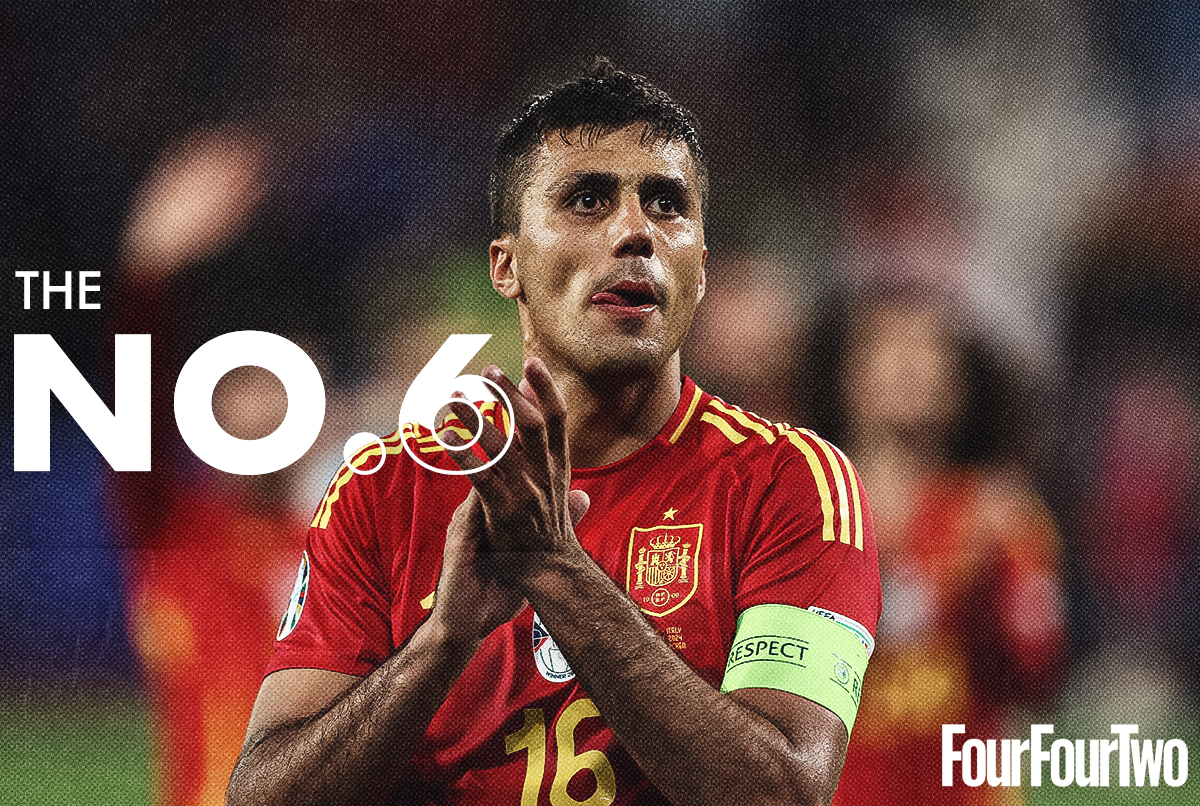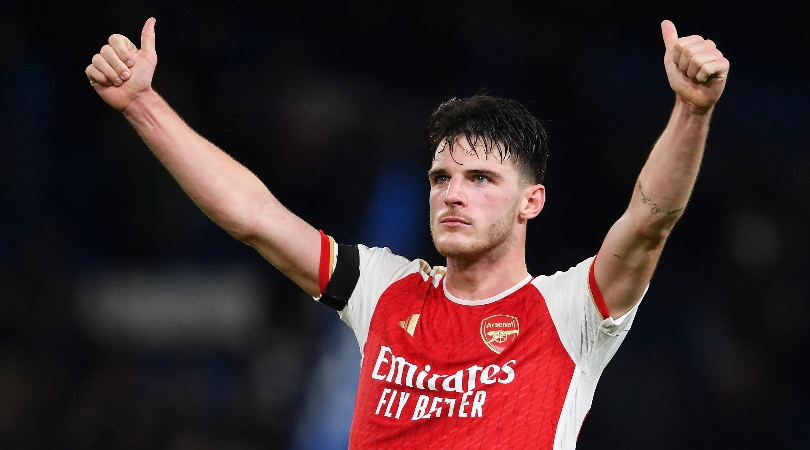
When we think of the No.6, we often think centre-halves. Bobby Moore, Franco Baresi, Tony Adams, Sol Campbell all spring to mind.
But throughout the continent and vast majority of football, the No.6 is not a defender. Instead the squad number has become synonymous with a very specific type of midfielder.
So what exactly does a no.6 do in the modern game and how does it relate to its team-mates – specifically, the no.8 and no.10? Let's take a look, as FourFourTwo explains one of the most integral football terms you need to know.
What is a No.6?
In a traditional sense the No.6 is a deep-lying midfielder, who will sit at the base of the midfield unit, regardless of the overall formation. They operate as the holding midfielder, receiving the ball in their own half and aiming to build attacks.
Teams with a three-person midfield can have either one or two no.6s depending on the structure of the team. A 4-3-3 system, for example, can be deployed with a single deeper no.6, with two no.8s taking up advanced positions; a 4-2-3-1, meanwhile could see two no.6s and a no.10.
The clip above highlights a loan no.6 in a 4-3-3.
This is a modern iteration that seems to have crept into footballing vernacular with the rise of Spanish football and the sight of Xavi wearing the digit for Barcelona. The first midfielder to wear the no.6 shirt in the Premier League, shockingly, came 24 years into the competition's history, in the shape of Paul Pogba at Manchester United.
But it was on these shores where the origin of the term comes from. One of the earliest recorded uses of numbers in Europe, came back in August 1928 when Sheffield Wednesday faced Arsenal and Chelsea played Swansea.
All teams used the dominant formation of the day the 2-3-5 and all numbers, in the era of 1-11, were assigned accordingly. The shirt with a six on the back was the player occupying the left half-back role – in modern terms a left-sided defensive midfielder.
What is the function of a no.6 – and are there different kinds?
Since the dawn of the role, a no.6's primary job has been to protect the defence behind, especially in transition. Little has changed in that regard – but in a chess-like era for the sport, the role has evolved, regardless of whether you field a single no.6 or a double-pivot.
There are defensive midfielders – who you might hear referred to as anchors, anchormen, destroyers or ball-winning midfielders. These are the tough-tackling, no-nonsense chaps who break up play, win second balls and organise the midfield: your Nobby Stileses and Claude Makeleles.
Then there are holding midfielders – who may be referred to as registas or deep-lying playmakers – tasked with progressing play from this position.
A lone no.6 – or single pivot – is increasingly uncommon in the modern age of counter-pressing, as the position can be very isolating in a wide open space of the pitch. While some managers opt for two no.6s centrally, others have paired a natural midfielder in the no.6 position with an inverted full-back, who will join them in possession. In a 4-3-3 formation, this gives your midfielder numerical superiority in the form of a box midfield – and it can offset the other's weakness. Having two bodies in this section of the pitch not only spreads them further apart to position each player in a half-space – splitting the responsibility of dictating the play in half – it doubles your defensive midfield cover in case of a counter-attack.
When your team is looking to dominate, a no.6's role is less about stopping the opposition and more what you can do with a ball at your feet. A player like Andrea Pirlo was used to overload build-up with an elite passer (alongside defenders who weren't quite as technically blessed).
He could bait the opposition's press when he was in his own half and when pressure was being sustained in the final third, he was central enough to dictate play from a position with the whole game ahead of him. A top-level no.6 controls attacks when you're ‘horseshoeing’.
In 2013, however, writer Jonathan Wilson identified another no.6 emerging alongside what he called ‘the destroyer’ and ‘the creator’ (our defensive midfielder and holding midfielder, respectively): ‘the carrier’. Citing the likes of Bastian Schweinsteiger, Wilson noted that some defensive midfielders are specialists at neither tackling nor passing, but progressing the ball from deep via dribbling – though these remain rare, with most deep-lying midfielders simply having ball-carrying as an extra string to their bow on top of ball-winning, such as N'Golo Kante.
Who are the great no.6s?

If we look at the top clubs across Europe today, nearly every one of them has a top quality no.6, often two. Declan Rice might wear his beloved No.41 for Arsenal, but he is arguably the best English no.6 since Michael Carrick.
Casemiro has at Old Trafford, but for the last decade his agility, ball retention and tackling ability made him for a long time probably the best no.6 on the planet. Along with Sergio Busquets who was one of the most important cogs in the Barcelona machine when they were regularly reaching the latter stages of the Champions League. Xavi may have wore the number, but Busquets – ranked at no.33 in FourFourTwo's list of the greatest players of all time – was closer to the original role.
Bruno Guimaraes emerged as one of the best no.6's in the Premier League at Newcastle United – but conversely, his game often focuses on dribbling and playing short passes, more associated with the no.8, to move his team forward, rather than long-range passing in the mould of Carrick or Andrea Pirlo. Intriguingly, a tempo controller like Sandro Tonali replaced Bruno at no.6 in 2024/25, for the Brazilian to step further up the pitch.
Going back further, Roy Keane in the second half of his career was perhaps the ultimate no.6 in terms of breaking down the opposition attacks but also retaining possession in a positive manner.
Jorginho, Falcao (the Brazilian one) and Javier Mascherano are all other fine examples, but the list of transformative, truly great, No.6s is almost endless. The common thread with all these players is that they could do very simple things well. Tackle and pass… and occasionally, carry.







